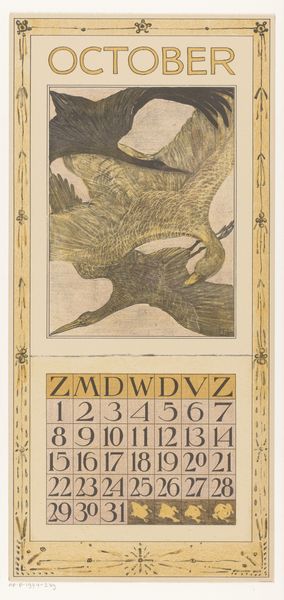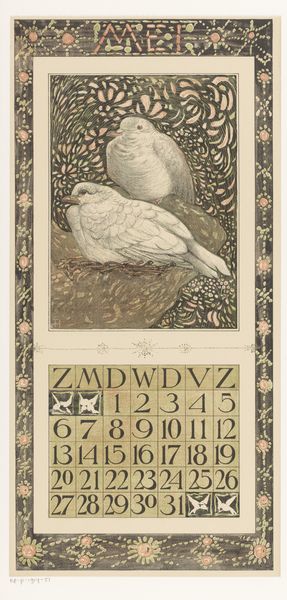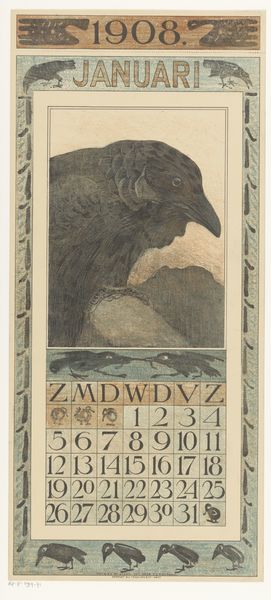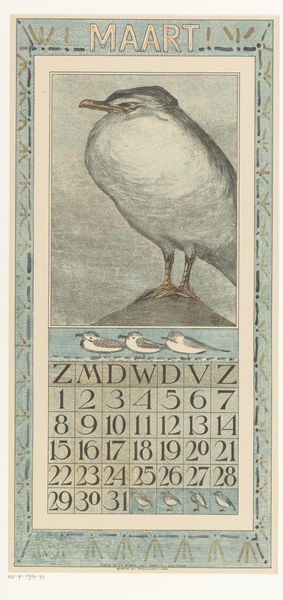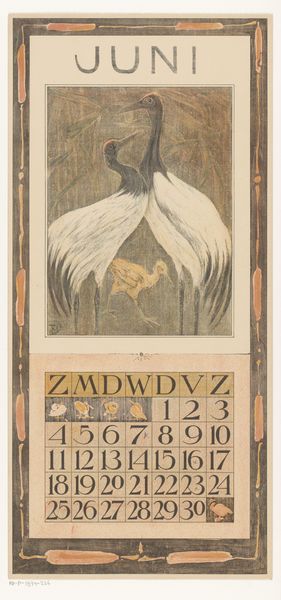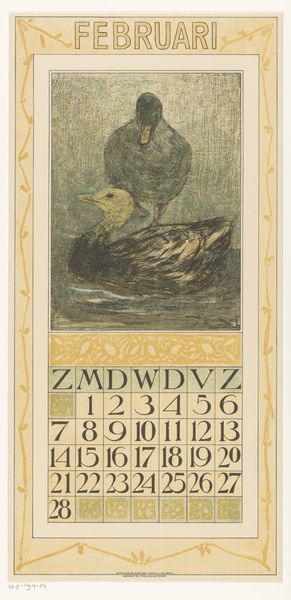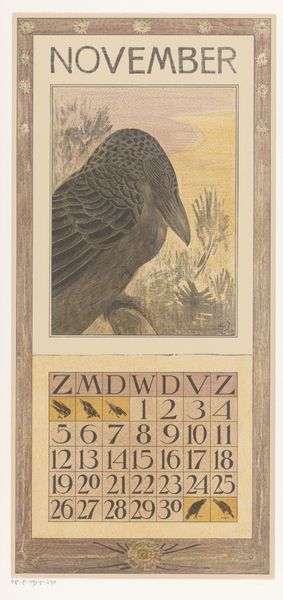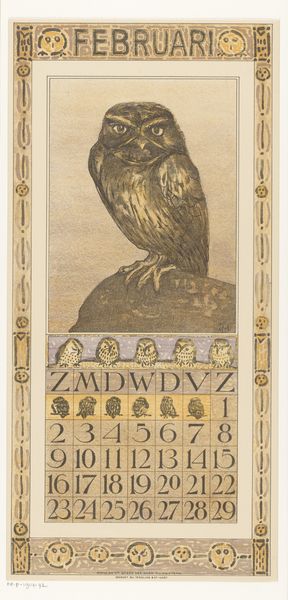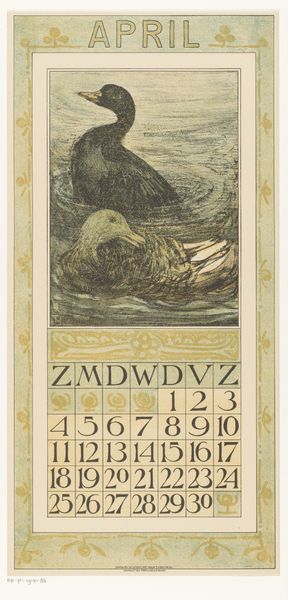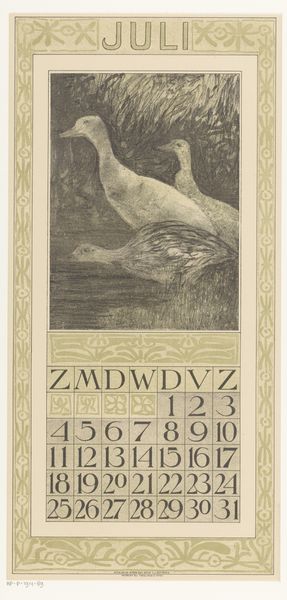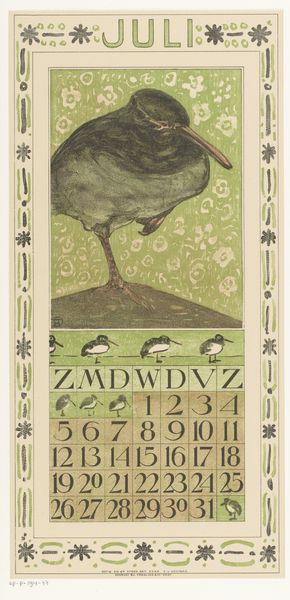
drawing, paper, watercolor, ink
#
drawing
#
art-nouveau
#
landscape
#
paper
#
watercolor
#
ink
#
watercolour illustration
Dimensions: height 450 mm, width 210 mm
Copyright: Rijks Museum: Open Domain
Editor: Theo van Hoytema's "September Calendar with Grey Heron," created in 1904, is an intriguing piece. I’m immediately drawn to how he blends this striking heron image with the practical design of a calendar. It feels like he's elevating something functional into fine art. What is your take on the piece? Curator: Well, situating this in its historical context is key. Consider the rise of Art Nouveau at the turn of the century. There was this push to integrate art into everyday life, challenging traditional hierarchies. How does a calendar featuring a grey heron function as both art and design in this framework? Editor: It’s interesting that you say that. It really prompts the question, was this calendar truly "for use", or a collector's item? It seems so delicate. Curator: Precisely! These weren't mass-produced, disposable calendars. Instead, Hoytema likely aimed at a sophisticated, art-appreciating audience. Look at the stylized typography, the careful integration of the image with the numbers. How do these details signal a specific social class and their values? Editor: The design choices absolutely create an air of exclusivity. Also, I just noticed the subtle depictions of animals in the squares representing days of the week – such detail for something ostensibly functional. Curator: Yes! That points to the artist's intention beyond mere utility. It's designed to appeal to someone who values nature, refined aesthetics, and perhaps even a certain level of social awareness signaled by its Art Nouveau style. We see art not simply displayed in galleries, but entering homes and shaping daily life in intentional, class-conscious ways. It asks the question – who gets to experience beauty every day? Editor: That definitely reframes how I initially saw it. It’s not just a pretty calendar, but a social object reflecting and reinforcing specific values of its time. I'm starting to understand the political power of imagery. Curator: And understanding the visual language, whether it be composition, iconography or style makes a real difference when interpreting social, historical and political meaning.
Comments
No comments
Be the first to comment and join the conversation on the ultimate creative platform.
